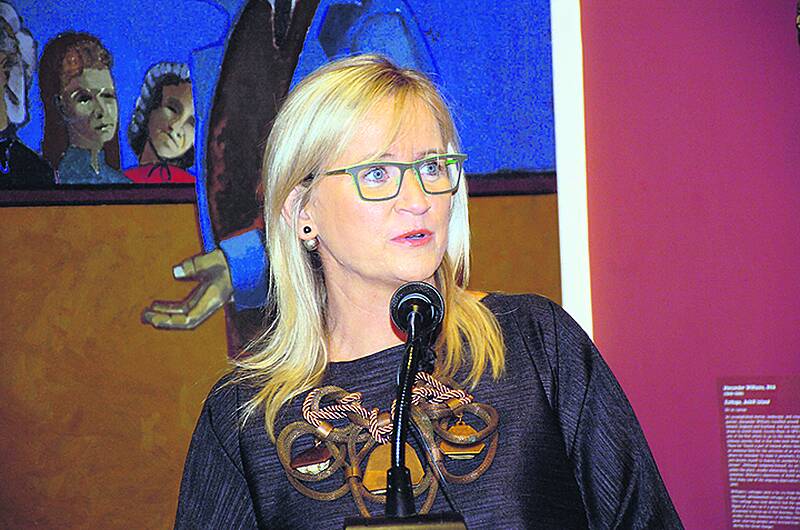The survival of the American museum that loaned many of the incredible pieces on show at the famine exhibition in Skibbereen last year hangs in the balance due to funding.
THE survival of the American museum that loaned many of the incredible pieces on show at the famine exhibition in Skibbereen last year hangs in the balance due to funding.
Ireland’s Great Hunger Museum, base at Quinnipiac University in Connecticut, houses the largest famine-related art collection in existence, and has been advised by the university’s new President that they should seek other means of funding outside the campus.
News of the possible closure of the museum has been described by Professor Niamh O’Sullivan, who curated the Coming Home: Art and the Great Hunger in Dublin and the Uillinn last Summer as a ‘tragedy’.
‘As to be expected with a new President, I understand that Quinnipiac University is reviewing all its provisions and programmes, it would, however, be a tragedy if the university was unable to directly support Ireland’s Great Hunger Museum in the future,’ Professor O’Sullivan told The Southern Star.
‘This collection is one of both national and international significance. The impact of the famine is still with us, it has shaped our history, our landscape, our politics, our culture and our character. And our diaspora – largely created by the famine – defines Ireland’s place in the world today.’
The exhibition, at the West Cork Arts Centre last summer, saw over 30,000 people travel to Skibbereen, a town that was left devastated during the famine years.
‘The Irish people took this collection into their hearts when 92,000 people visited the exhibition Coming Home in Dublin and Skibbereen last year,’ Professor O’Sullivan said.
‘For me, the welcome for this exhibition in Skibbereen was especially poignant, given the suffering endured by the people of Cork during the Famine.
‘The Uilinn can be proud of its role in keeping the memory of the Great Hunger alive.’
In a statement, issued to The Southern Star, a spokesperson for Quinnipiac said that the university was restructuring and while no final decision on whether or not to withdraw funding has been made, the university is looking to the museum to find other sources of support.
‘The university is in the midst of a rigorous and comprehensive strategic planning process around the critical priorities of student learning and institutional excellence. Given our many student-centric priorities, our hope is that Ireland’s Great Hunger Museum identifies diverse sources of support for its programmes and initiatives, including philanthropy,’ said Lynn Bushnell, vice president for public affairs at Quinnipiac.
While the survival of Great Hunger Museum remains unclear Professor O’Sullivan hopes that the art collection has a home into the future.
‘This collection is unique in its scope and coherence. As consultant curator of the museum for the last seven years, I believe that it is essential that the collection remain intact, so that it can continue to inspire us, and our diaspora, to engage with our past, and reflect on ongoing issues of poverty and displacement in the world today,’ Professor O’Sullivan concluded.







